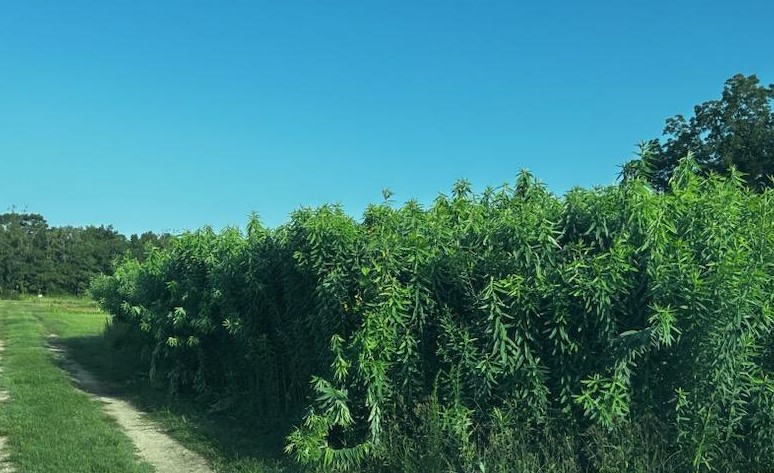Weekly Field Update
Clemson Extension agents provide updates in The South Carolina Grower this week about the status of various crops being produced throughout the state.

Coastal Region
Zack Snipes
- Not much is happening in the Lowcountry this week.
- Muscadines are coming to market in good volumes. No real issues to report there.
- Cover crops are a hot topic right now. I have seen incredible cover crops this year due to timely rains. Some folks are even using cover crops as a maze on their farms to bring in extra revenue.
Midlands
Phillip Carnley
- Orangeburg and Calhoun have been a little dryer lately than previously in the season.
- With the dryer weather, late-season peas and butterbeans are doing well, with the last of the summer plantings of peas just finishing up harvest.
- Muscadines are ripening up. I have seen a few vines with late-season herbicide damage from surrounding crop land.
- Fall tomatoes are looking great at the moment, but tomato fruitworm (TFW) is rearing its ugly head in great numbers. If you have a history of TFW outbreaks in the past, your best course of action is to scout early and often.
- Peppers have seen an uptick in the occurrence of anthracnose and blossom end rot. Just like with tomatoes, make sure you have a consistent watering program to mitigate blossom end rot.
Rob Last
- Preparations for fall cropping continue despite the observed hot and humid conditions.
- One thing I am picking up in many crops, both perennial and annuals, is nutrient deficiency symptoms. Nutrient deficiencies will show up in times of stress and can indicate underlying soil acidity changes.
- Iron deficiency can indicate a soil pH that is higher than ideal.
- Typically, micro-elements such as manganese, zinc, boron, molybdenum and iron will display chlorosis of the new leaves. The micro-nutrients are less mobile in the plant. Take a tissue test to ensure the accuracy of the diagnosis. Chelated micro-nutrient formulations can be very effective in treating a deficiency, and be aware of applications in the heat of the day.
- Macro-nutrients typically display in the plant’s older leaves, because these elements are more mobile in the plant. Nitrogen and sulfur deficiency can be shown as chlorosis of the older leaves. Potassium will often display interveinal chlorosis and as a burn to the leaf margins. A reddening of the older leaves often indicates phosphorous. Magnesium will display interveinal chlorosis but affecting the older leaves.
Sarah Scott
- Last week was a hot and humid one. Several evenings brought rain showers to keep soils relatively moist.
- Fall crops are growing nicely, but the pests have already started showing up. Bell peppers are starting to flower.
- The last of the peaches are being harvested. We’re wrapping up some light pruning and pushing up old orchards to make room for new plantings. Post-harvest fertilization continues. Basic recommendations are 30 pounds of nitrogen per acre, as long as you had between 12 and 18 inches of terminal growth. If terminal growth was less than 12, apply 35 pounds of actual nitrogen per acre.
Pee Dee
Bruce McLean
- Growers are getting their orders in for strawberries. Ideally, you want to get your order in at least a couple of months prior to planting so you can get the varieties that you would like and not the varieties that you can get. We’re not very far away from time to start prepping fields and fumigating. Now is a good time to make sure you have all of the materials you need for the upcoming season.
- Keep an eye out for fungal diseases on blueberries and blackberries, and treat if necessary. Just because they are not in harvest, don’t think that there is nothing that needs to be done. Late summer infections can lead to problems on the plants next year.
- Fresh market muscadines are starting to harvest with some volume. Carlos is just starting to come into color – 10% to 15%. Noble is maybe 25% to 30% colored. Doreen is about 5%. Right now is a good time to start skirting the vines in preparation for harvest.
- Summer vegetables (okra, tomatoes, peppers, watermelon, cantaloupe) are all picking well. Cucumbers and squash are picking with some volume. Peas are still harvesting well and are relatively clean with minor curculio damage.
- Fall vegetables are being planted now.
- Keep cool. It looks like we have another hot spell forecast for later this week.










